Yaesu FT-1802M Bedienungsanleitung
Lies die bedienungsanleitung für Yaesu FT-1802M (88 Seiten) kostenlos online; sie gehört zur Kategorie Radio. Dieses Handbuch wurde von 41 Personen als hilfreich bewertet und erhielt im Schnitt 4.9 Sterne aus 21 Bewertungen. Hast du eine Frage zu Yaesu FT-1802M oder möchtest du andere Nutzer dieses Produkts befragen? Stelle eine Frage
Seite 1/88

FM TRANSCEIVER
FT-1802M
OPERATING MANUAL
VERTEX STANDARD CO., LTD.
4-8-8 Nakameguro, Meguro-Ku, Tokyo 153-8644, Japan
VERTEX STANDARD
US Headquarters
10900 Walker Street, Cypress, CA 90630, U.S.A.
YAESU EUROPE B.V.
P.O. Box 75525, 1118 ZN Schiphol, The Netherlands
YAESU UK LTD.
Unit 12, Sun Valley Business Park, Winnall Close
Winchester, Hampshire, SO23 0LB, U.K.
VERTEX STANDARD HK LTD.
Unit 5, 20/F., Seaview Centre, 139-141 Hoi Bun Road,
Kwun Tong, Kowloon, Hong Kong

Contents
Introduction ...................................................... 1
Specifications .................................................... 2
Accessories & Options ..................................... 3
Supplied Accessories ..................................... 3
Optional Accessories ...................................... 3
Installation ........................................................ 4
Preliminary Inspection ................................... 4
Installation Tips .............................................. 4
Safety Information ......................................... 5
Antenna Considerations ................................. 6
Mobile Installation ......................................... 7
Mobile Power Connections ........................ 8
Mobile Speakers ........................................ 8
Base Station Installation ................................ 9
AC Power Supplies .................................... 9
Front Panel Controls & Switches ................. 10
Microphone Switches ..................................... 12
Rear Panel Connectors .................................. 13
Basic Operation .............................................. 14
Turning the Transceiver On and Off ........... 14
Adjusting the Audio Volume Level ............. 14
Adjusting the Squelch Setting ..................... 14
Frequency Navigation .................................. 15
1) Tuning Dial ......................................... 15
2) Direct Keypad Frequency Entry .......... 15
3) Scanning .............................................. 15
Transmission ................................................ 16
Changing the Transmitter Power Level ... 16
Advanced Operation ...................................... 17
Weather Broadcast Reception ...................... 17
Lock Feature ................................................. 18
Keyboard Beeper .......................................... 18
Channel Step Selection ................................ 19
Display Brightness ....................................... 19
RF Squelch ................................................... 20
Repeater Operation ...................................... 21
Standard Repeater Shift ........................... 21
Automatic Repeater Shift (ARS) ............. 22
Separate Transmit Frequency Memory
(“Odd Splits”) ...................................... 23
CTCSS/DCS/EPCS Operation ..................... 24
CTCSS Operation .................................... 24
DCS Operation ......................................... 25
Tone Search Scanning ............................. 26
EPCS Operation ....................................... 27
CTCSS/DCS/EPCS Bell Paging .............. 29
Split Tone Operation ............................... 27
DTMF Operation .......................................... 32
Manual DTMF Tone Generation ............. 32
DTMF Autodialer .................................... 32
Memory Operation ........................................ 34
Memory Storage ........................................... 34
Memory Recall ............................................. 35
Labeling Memories ...................................... 36
Memory Tuning ........................................... 37
Masking Memories ...................................... 37
Memory Bank Operation ............................. 38
Assigning Memories to a Memory Bank . 38
Memory Bank Recall ............................... 38
Removing Memories
from a Memory Bank .......................... 39
Changing a Memory Bank’s Name ......... 39
HOME Channel Memory ............................. 40
Memory Only Mode ..................................... 41
Scanning .......................................................... 42
Basic Scanner Operation .............................. 42
Scan-Resume Option ................................... 43
Memory Skip Scanning ............................... 44
Preferential Memory Scan ........................... 45
Memory Bank Link Scan ............................. 46
Programmable Band-Scan Limits ................ 47
Priority Channel Scanning (Dual Watch) .... 48
Priority Revert Mode ............................... 48
Weather Alert Scan ...................................... 49
Band Edge Beeper ........................................ 49
Smart Search Operation ................................ 50
Internet Connection Feature ......................... 52
SRG Mode .................................................... 52
FRG Mode .................................................... 52
ARTS™ ........................................................... 55
Basic ARTS™ Setup and Operation ........... 55
ARTS™ Polling Time Options .................... 56
ARTS™ Alert Beep Options ....................... 56
CW Identifier Setup ..................................... 57
CW Training Feature .................................... 58
Packet Operation ............................................ 59
Miscellaneous Settings ................................... 60
Password ...................................................... 60
Time-Out Timer ........................................... 61
Automatic Power-Off ................................... 61
Busy Channel Lock-Out .............................. 62
Programming the Key Assignments ............ 63
FM Bandwidth & TX Deviation Level ........ 64
MIC Gain Setting ......................................... 64
DCS Code Inversion .................................... 65
Reset Procedure .............................................. 66
Microprocessor Resetting ............................ 66
Set Mode Resetting ...................................... 66
Cloning ............................................................ 67
“Set” (Menu) Mode ........................................ 68

FT-1802M O
The Yaesu FT-1802M is a deluxe, rugged FM mobile transceiver providing high power
output and outstanding receiver performance for the 144 MHz Amateur band. Included in
the FT-1802M’s feature complement are:
50 Watts of power output, with selection of four power levels for every operating situa-
tion.
Expanded receiver coverage: 136-174 MHz.
Keyboard entry of operating frequencies from the microphone.
Excellent protection from receiver intermodulation distortion, thanks to Yaesu’s renowned
Advanced Track Tuning front end.
221 memories (200 “basic” memory channels, 10 sets of band-edge memory channels,
and one “Home” channel) which can store repeater shifts, odd repeater shifts, CTCSS/
DCS tones, and 6-character Alpha-Numeric labels for easy channel recognition.
10 NOAA Weather Broadcast Channels, with Weather Alert and a Volume Control for
the Weather Alert tone.
Built-in CTCSS and DCS Encoder/Decoder circuits.
The Smart SearchTM feature, which automatically sweeps a band and loads active fre-
quencies into dedicated memory banks, is ideal for identifying active repeaters when
visiting a city for the first time.
Extensive Menu system, which allows customization of a number of transceiver perfor-
mance characteristics.
The Yaesu-exclusive multi-function LCD display.
Additional features include a transmit Time-Out-Timer (TOT), Automatic Power-Off (APO),
Automatic Repeater Shift (ARS), plus provision for reduction of the Tx deviation in areas of
high channel congestion. And an RF Squelch circuit allows the owner to set the squelch to
open at a programmable setting of the S-Meter, thus reducing guesswork in setting the squelch
threshold.
Congratulations on your purchase of the FT-1802M! Whether this is your first rig, or if
Yaesu equipment is already the backbone of your station, the Vertex Standard organization
is committed to ensuring your enjoyment of this high-performance transceiver, which should
provide you with many years of satisfying operation. Our dealer network and technical sup-
port personnel stand behind every product we sell, and we invite you to contact us should
you require technical advice or assistance.
We recommend that you read this manual in its entirety prior to installing the FT-1802M, so
that you fully understand the capabilities of your new transceiver.
INTRODUCTION
Produktspezifikationen
| Marke: | Yaesu |
| Kategorie: | Radio |
| Modell: | FT-1802M |
Brauchst du Hilfe?
Wenn Sie Hilfe mit Yaesu FT-1802M benötigen, stellen Sie unten eine Frage und andere Benutzer werden Ihnen antworten
Bedienungsanleitung Radio Yaesu

23 August 2024

1 August 2024

30 Juli 2024

29 Juli 2024

29 Juli 2024

27 Juli 2024

25 Juli 2024

24 Juli 2024

21 Juli 2024

19 Juli 2024
Bedienungsanleitung Radio
- Teufel
- Garmin
- Insignia
- Caliber
- Metabo
- Clint
- GME
- First Austria
- Denver
- Lenco
- Kayinow
- Eoxsmile
- Jensen
- Salora
- Silva Schneider
Neueste Bedienungsanleitung für -Kategorien-
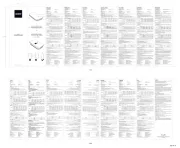
10 August 2025
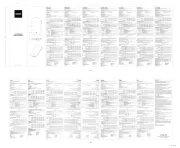
9 August 2025
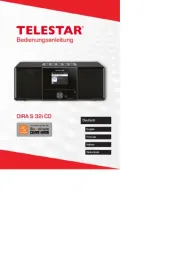
9 August 2025
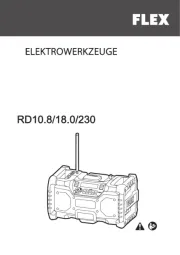
9 August 2025

9 August 2025
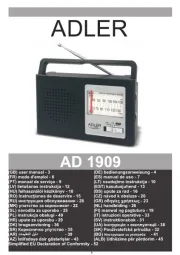
8 August 2025
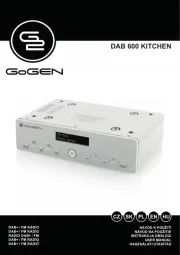
8 August 2025
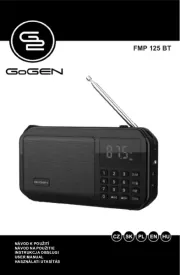
7 August 2025
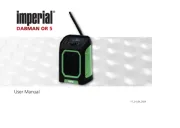
7 August 2025
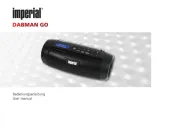
7 August 2025